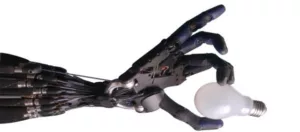In today’s competitive and ever-changing environment, businesses and inventors are seeking ways to build materials both easier and cheaper. Researchers at MIT’s Self-Assembly Lab may have developed just the answer with its revolutionary solutions for design and production.
Skylar Tibbits and the MIT Self-Assembly Lab
Skylar Tibbits is the lead research scientist and director of MIT’s Self-Assembly Lab, which is a division of the school’s Department of Architecture. Tibbits has a Professional Degree in Architecture and a minor in experimental computation from Philadelphia University. He received dual Masters of Science degrees at MIT, in both Design Computation and Computer Science. Tibbits has been published extensively in outlets such as Fast Company, Wired, and the New York Times. His work in self-assembly and 4D printing is considered ground-breaking.
What is Self-Assembly?
Self-assembly is a process by which disordered parts form into an ordered structure. The process can be completed on a variety of scales, and is used in manufacturing, construction, design, and even art. Many of the 4D printing projects that are undertaken at the lab focus on “time,” which is the ability of the materials to change over time or in response to external stimuli. The outside influencers could be such things as moisture, temperature, sound, or even some type of energy.
Self-Assembling Products
Some of the projects at the self-assembly lab are focused more on cost-savings and efficiencies. For example, the lab was able to create a self-building cell phone as well as a self-assembling chair. The cell phone project won’t likely find its way into your living room anytime soon, but it was a way to illustrate the cost savings that are available by scaling the production method and making use of automation tools.

What’s the point of self-assembling furniture? Simple! The flexing and self-snapping tables that were produced by the lab come out of production flat as pancakes. They can slide into a box for easy shipping and will be consumer-ready when they reach your home. MIT’s lab partnered with Wood-Skin to create this amazing product and are considering plans to make the table for sale to the public.
Building Material of the Future
While design is a key component to most products, buildings, and systems, materials often aren’t given their just due. In fact, Tibbits believes that the next frontier lies in the architectural materials, which is where his Self-Assembly Lab has been focusing resources.
The lab is developing materials that have dynamic properties, making their use potential virtually unlimited. For example, materials make it possible for joints to bend when stressed, furniture to assemble on its own, and fabric to morph into new shapes.
Tibbits has created some models and art exhibits made of Misapor, which is foam gravel that is also a glass byproduct. Misapor makes use of “jamming,” which usually uses liquid, but not in this case. In shaping Misapor, there is a delicate balance of tension and compression that allows concrete-like structures to be assembled with ease. The best part? These materials are much more eco-friendly than regular concrete.
Self-assembling products and their unique materials may still be in their infancy, but the revolutionary gains continue to amass. This groundbreaking process, and the corresponding materials, has the potential to open up new markets and disrupt existing ones in the near future.
[Image Credit: tek0011 / Reddit]








